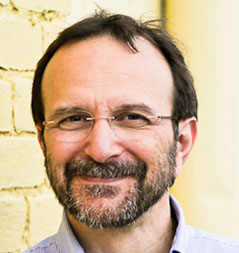In his weekly clinical update, Dr. Griffin dives into “pandemic potential” viruses isolated from farmed fur animals, how the mRNA and pox vectored vaccines against mpox spar against each other, how telehealth does managing mpox, and if prophylactic use of the anti-RSV monoclonal for infants is cost-effective before reviewing the recent statistics on SARS-CoV-2 infection, if viral load correlates to one vaccination status, where to find PEMGARDA, does administration of molnupiravir reduce symptoms in the vaccinated, when to use convalescent plasma, how molnupiravirs treatment leads to better outcomes 3 and 6 months after treatment, a reminder of how and when to use steroids to treat COVID-19, what do when healthcare workers succumb to SARS-CoV-2 infection, if vaccination against SARS-CoV-2 does protect against long COVID, and if SARS-CoV-2 during Omicron alters ones’ micriobiota.
In his weekly clinical update, Dr. Griffin discusses seasonal influenza vaccine recommendations from the CDC, polio vaccine campaign securing mpox vaccine for Africa, and donating to reduce food insecurity in mpox affected areas before reviewing the recent statistics on SARS-CoV-2 infection, where to find PEMGARDA, when to use convalescent plasma, a reminder of how and when to use steroids to treat COVID-19, what do when healthcare workers succumb to SARS-CoV-2 infection, if vaccination against SARS-CoV-2 does protect against long COVID, how fibrin drives thromboinflammation and neuropathology in COVID-19, and an evidence based approach to long COVID.
In his weekly clinical update, Dr. Griffin discusses Dr. Fauci’s case of West Nile virus, polio vaccine campaign develops in Gaza, disease that associates with Oropouche virus, mpox: vaccines, clinical trial for mpox antiviral and the WHO strategic preparedness and response plan before reviewing the recent statistics on SARS-CoV-2 infection, how to obtain free COVID tests, EUA for updated Novavax COVID vaccine, ISDA support of and where to find PEMGARDA, breakthrough infections when administering PEMGARDA, when to use convalescent plasma, what do when healthcare workers succumb to SARS-CoV-2 infection, if nirmatrelvir/ritonavir is effective at preventing hospitalization of high risk patients, incidence of mental illness in the vaccinated and unvaccinated, the effect of amubarvimab/romlusevimab on long COVID outcome, having an evidence based approach to long COVID and how fibrin drives thromboinflammation and neuropathology in COVID-19.
TWiV discusses WHO declaration of Mpox as a public health emergency of international concern, Sweden reports first case of clade 1b outside of Africa, can household pets be productively infected with monkeypox virus, widespread exposure to SARS-CoV-2 in wildlife communities, and modulation of plant defenses by insect salivary GAPDH benefits viral transmission.
In his weekly clinical update, Dr. Griffin discusses global transmission of mpox, the different clades of the virus and associated pathogenesis, vaccination vs antiviral therapy against mpox and the US’s aid response for controlling the African outbreak before reviewing the recent statistics on SARS-CoV-2 infection, authorization and approval of updated COVID vaccines, the economic benefit of an annual COVID vaccine and if the first updated vaccines against XBB.1.5 were effective, where to find PEMGARDA, breakthrough infections when administering PEMGARDA, when to use convalescent plasma, what do when healthcare workers succumb to SARS-CoV-2 infection, and how long COVID differs in children and adolescents.
TWiV discusses the spread of monkeypox virus clade 1b in Africa, COVID drops to tenth leading cause of death in the US, response to detection of poliovirus in Gaza, mechanism of MIS-C after SARS-CoV-2 infection, neonatal Fc receptor is a pan-arterivirus receptor, and antiviral immunity in plants mediated by protein arginine methyltransferase 6.
In his weekly clinical update, Dr. Griffin discusses how measles in persons with secondary vaccination failure may be less infectious than in others who were never vaccinated yet infected, the recent declaration by the WHO that mpox is a public health emergency of international concern, before reviewing the recent statistics on SARS-CoV-2 infection, where to find PEMGARDA, why the use of a single monoclonal antibody against SARS-CoV-2 will result in circulation of resistant viral variants, when to use convalescent plasma, what do when healthcare workers succumb to SARS-CoV-2 infection, public health policies and research needed for long COVID, how none of the 25 routine clinical laboratory served as a clinically useful biomarker of PASC, how symptoms of COVID-19 persist in postmenopausal women and the benefits of telemedicine for long-term patient monitoring, early diagnosis, and treatment.
Vincent travels to the Karolinska Institute in Stockholm on 31 May 2024 to meet with Dr. Judith Bruchfeld and discuss her research on the etiology and treatment of Long COVID.
In his weekly clinical update, Dr. Griffin discusses the harms of perpetuating the lab leak hypothesis and the recent ACIP recommendations for the RSV vaccine for those individuals over 60, before reviewing the recent statistics on SARS-CoV-2 infection, treatment guidelines for the different phases of COVID, including vaccines, Pemgarda, early treatment with Paxlovid, remdesivir and molnupiravir, steroids at the right time, anticoagulation support, immune modulation in some cases, and a comprehensive definition of long COVID.
TWiV discusses a twice-yearly antiviral for prevention of AIDS, the WHO pandemic plan, West Nile resurgence in the US, the BANAL SARS-CoV-2 related viruses reproduce in human cells but do not transmit among animal hosts, and an amino acid change in dengue virus that enhances midgut replication in mosquitoes but reduces pathogenicity in humans.








